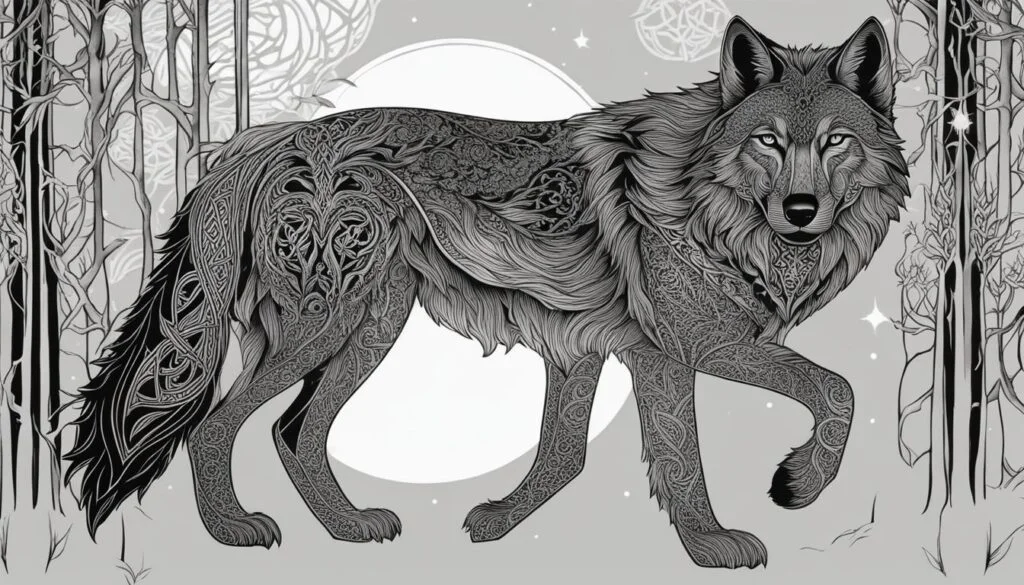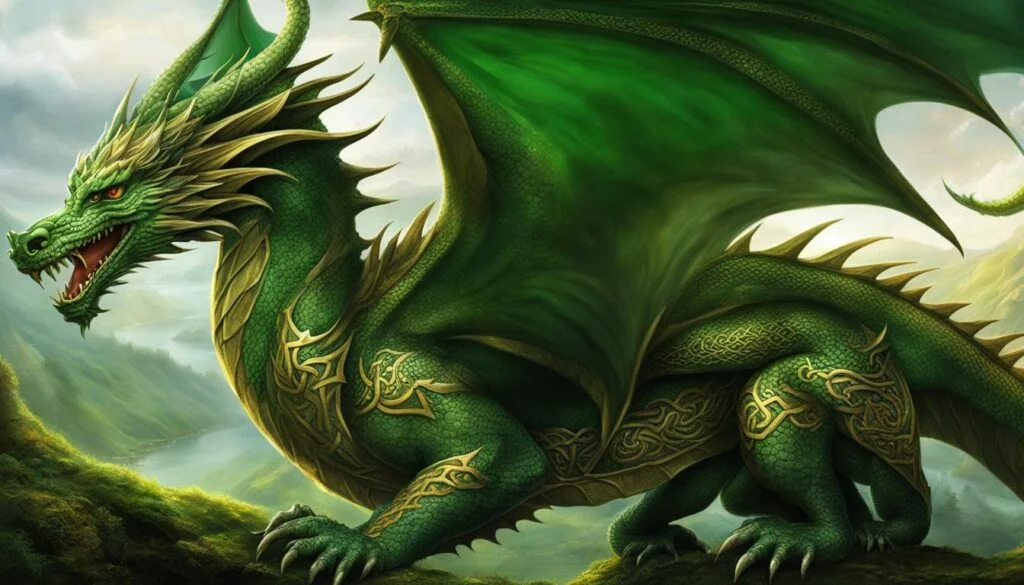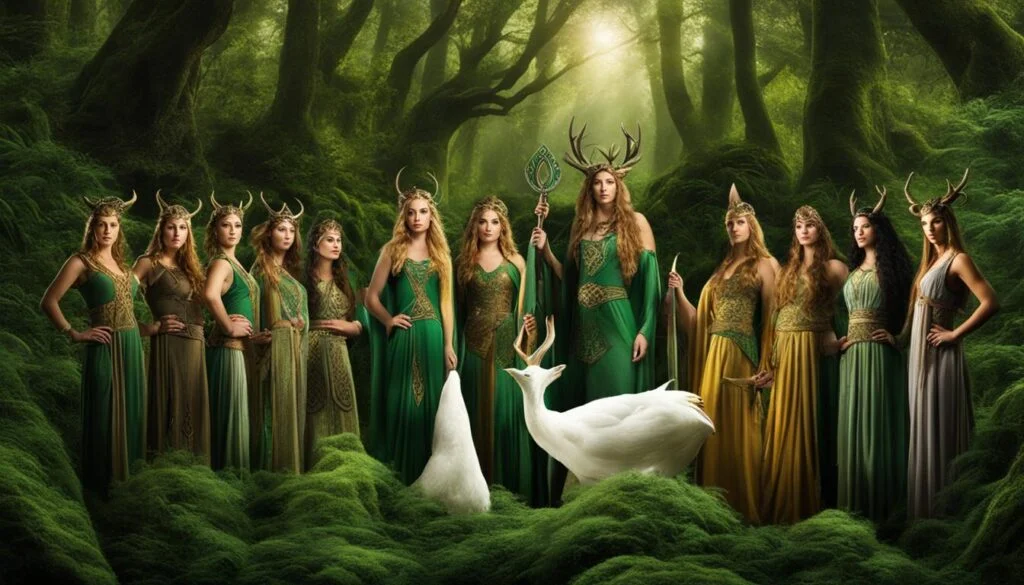In Celtic culture, the wolf holds a deep and multifaceted symbolism. From ancient myths to modern interpretations, the wolf represents various qualities and concepts that resonate with the Celts. Let’s delve into the rich history and cultural significance of the wolf in Celtic traditions.
Key Takeaways:
- Wolf symbolism in Celtic culture is rooted in ancient Irish mythology, where it was associated with bravery, loyalty, and protection.
- The Celts believed that the wolf represented the moon, transformation, intuition, and the ability to communicate with spirits.
- With the arrival of Christianity, the wolf began to be seen as a symbol of evil and darkness, leading to its extinction in Ireland.
- However, there is now a resurgence of interest in the wolf’s symbolism and a recognition of its important role in Celtic mythology.
- Wolves were also revered in Gaulish and Norse mythologies, where they were associated with warriors and cosmic forces.
The Wolf in Celtic Mythology
In Celtic mythology, the wolf held different meanings depending on the region and time period. In medieval Irish and Welsh myths, wolves were seen as helpful and guiding spirits. They were also associated with deities such as Morrigan and were often seen as protectors and guardians.
The Celtic wolf was a symbol of strength, family, spirituality, freedom, and protection. It represented the connection between the physical and spiritual realms and the importance of intuition and individuality.
The wolf was revered for its ability to survive and thrive in nature while remaining deeply connected to its pack, making it a powerful metaphor for the Celtic people. Its association with key aspects of life such as strength, spirituality, and the bond between family members signified the importance of these qualities in Celtic culture.
Celtic legends often portrayed the wolf as a wise and noble creature, serving as a reminder for individuals to embrace their inner strength, protect their loved ones, and listen to their instincts. The wolf represented the raw and primal forces of nature, teaching the Celtic people about the inherent power and beauty found in the natural world.
Overall, the wolf’s significance in Celtic mythology showcases its portrayal as a symbol of wisdom, courage, and the delicate balance between the physical and spiritual realms.
Wolf Symbolism Across Celtic Cultures
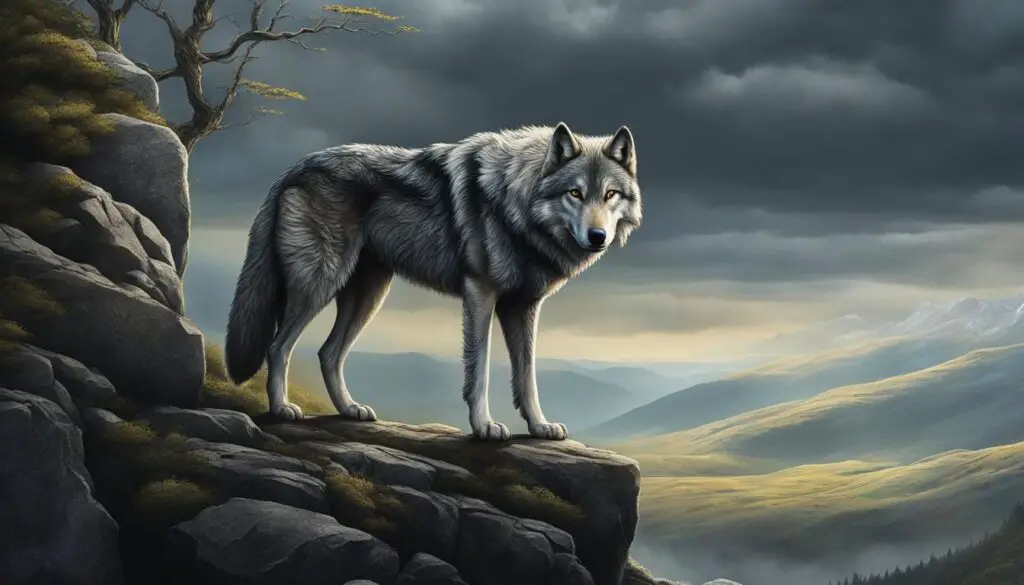
The wolf holds a significant place in the symbolic landscape of Celtic cultures throughout history. Its meaning and representation varied across different regions and time periods, reflecting the diverse beliefs and values of these ancient peoples.
In ancient Celtic Europe, the wolf appeared on coins and was closely associated with celestial bodies such as the moon and the sun. This connection between the wolf and heavenly elements symbolized the cyclical nature of life, death, and rebirth, highlighting the wolf’s role as a powerful symbol of transformation and renewal.
In Iberian and Celtiberian cultures, the wolf was seen as a representation of the warrior spirit, embodying traits of bravery, strength, and the survival of the fittest. These cultures appreciated the wolf’s hunting skills and instinct, considering it a symbol of prowess and adaptability in the face of challenges.
Medieval Celtic Ireland saw a more complex interpretation of wolves. They were both feared as threats and revered as guides. Legends of humans turning into wolves and stories of wolves raising human children were prevalent, highlighting the wolf’s enigmatic nature and its ability to navigate the boundaries between the human and animal realms.
Overall, the wolf held immense significance in Celtic cultures as a symbol of power, protection, and the delicate balance between wildness and civilization. It was revered for its connection to the natural world, its inherent wisdom, and its role as a guardian and spiritual guide.
To visualize the rich imagery associated with Celtic wolf symbolism, take a moment to appreciate the following image:
Wolves in Folklore and Popular Culture
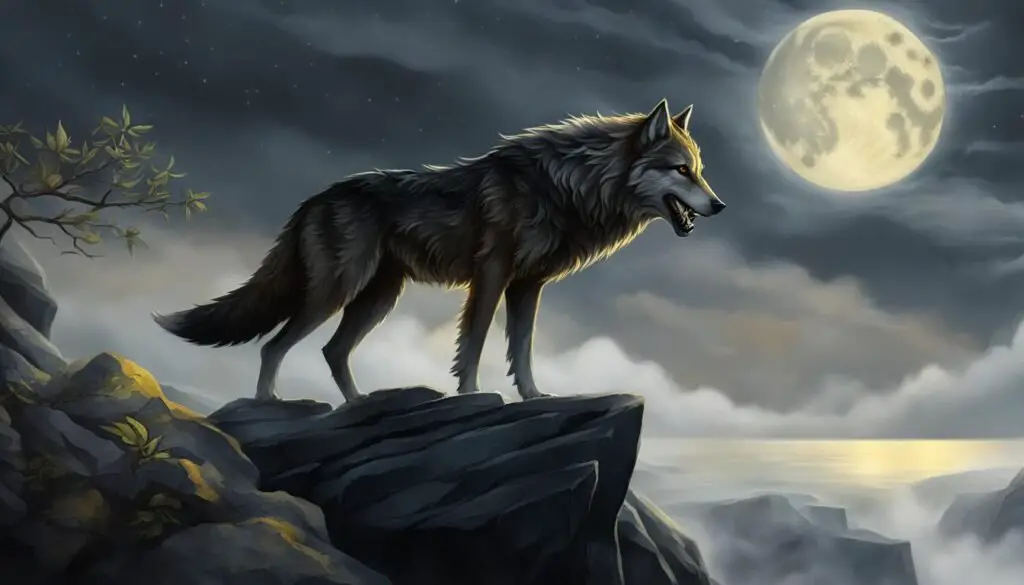
Wolves have always held a prominent place in folklore and popular culture, captivating our imaginations with their enigmatic nature. Throughout history, these majestic creatures have been depicted in various ways, often with conflicting portrayals.
European folktales frequently portray the wolf as a threatening creature, symbolizing danger and cunning. However, these stories also recognize the wolf’s loyalty and nobility, highlighting its dualistic nature. In Celtic culture specifically, the interpretations of the wolf vary across different regions and time periods, reflecting the complexities of its symbolism.
Eastern European cultures, for instance, embraced the legend of the werewolf, a human capable of transforming into a wolf-like creature. This folklore served as a reminder of the wild and primal aspects of human nature, as well as the potential for both good and evil within us.
In Scotland, the mythical creature known as the Wulver boasted the body of a man but the head of a wolf. Unlike the ferocious werewolf, the Wulver was renowned for its benevolence and compassion, offering aid to those in need. This beloved figure embodied the protective and nurturing aspects often associated with the wolf.
Wolves continue to make significant appearances in modern literature and film, further solidifying their place in popular culture. The renowned author J.R.R. Tolkien, in his Middle-earth series, masterfully portrayed wolves as formidable and intelligent creatures within the rich tapestry of his mythical world.
The popularity of wolves also soared with the release of the well-loved Twilight series, where they took on a central role as both protagonists and symbols of power and loyalty.
Overall, the enduring presence of wolves in folklore and popular culture speaks to the deep fascination and admiration humans have always had for these captivating creatures. Their rich symbolism and the multitude of interpretations in different cultures continue to ignite the imagination and keep the spirit of the wolf alive.
Conclusion
The celtic wolf symbolism runs deep within the mythology and culture of the Celts. This majestic creature embodies a wide range of qualities and concepts, including bravery, loyalty, spirituality, and the delicate balance between wildness and civilization. The significance of the wolf in celtic traditions cannot be overstated.
Throughout history, the symbolic meaning of the wolf has evolved, shaped by the diverse cultural beliefs and values of the Celts. While the wolf was once revered as a guiding spirit and protector, it later became associated with darkness and evil due to the influence of Christianity. Unfortunately, this negative perception led to the extinction of wolves in Ireland.
However, in recent times there has been a resurgence of interest in the celtic wolf symbolism, reflecting a growing appreciation for the rich heritage and mythological connections. Efforts are being made to reintroduce wolves to their natural habitats, highlighting the desire to restore the balance between nature and humanity.
Today, the lingering presence of the wolf in folklore and popular culture serves as a testament to its enduring mystique and power. The celtic wolf symbolism continues to captivate our imagination, reminding us of the timeless lessons embedded in ancient traditions and the importance of embracing our wild and spiritual nature.
FAQ
What does the wolf symbolize in Celtic mythology?
The wolf in Celtic mythology symbolizes bravery, loyalty, protection, the moon, transformation, intuition, and the ability to communicate with spirits.
What are Celtic beliefs about the wolf?
The Celts believed that the wolf was a symbol of strength, family, spirituality, freedom, and protection. It represented the connection between the physical and spiritual realms and the importance of intuition and individuality.
How is the wolf interpreted in Celtic culture?
The wolf holds significance in Celtic cultures as a symbol of power, protection, and the balance between wildness and civilization. It represented the cyclical nature of life, death, and rebirth.
How is the wolf portrayed in folktales and popular culture?
In European folktales, the wolf is often depicted as a threat to humans, but also recognized for its loyalty and nobility. It has been featured in werewolf legends and celebrated in modern literature and film, such as J.R.R. Tolkien’s portrayal in Middle-earth and the Twilight series.
What is the cultural significance of the wolf in Celtic traditions?
The wolf holds a complex and significant role in Celtic mythology and culture. It symbolizes various qualities and concepts such as bravery, loyalty, spirituality, and the balance between wildness and civilization.


